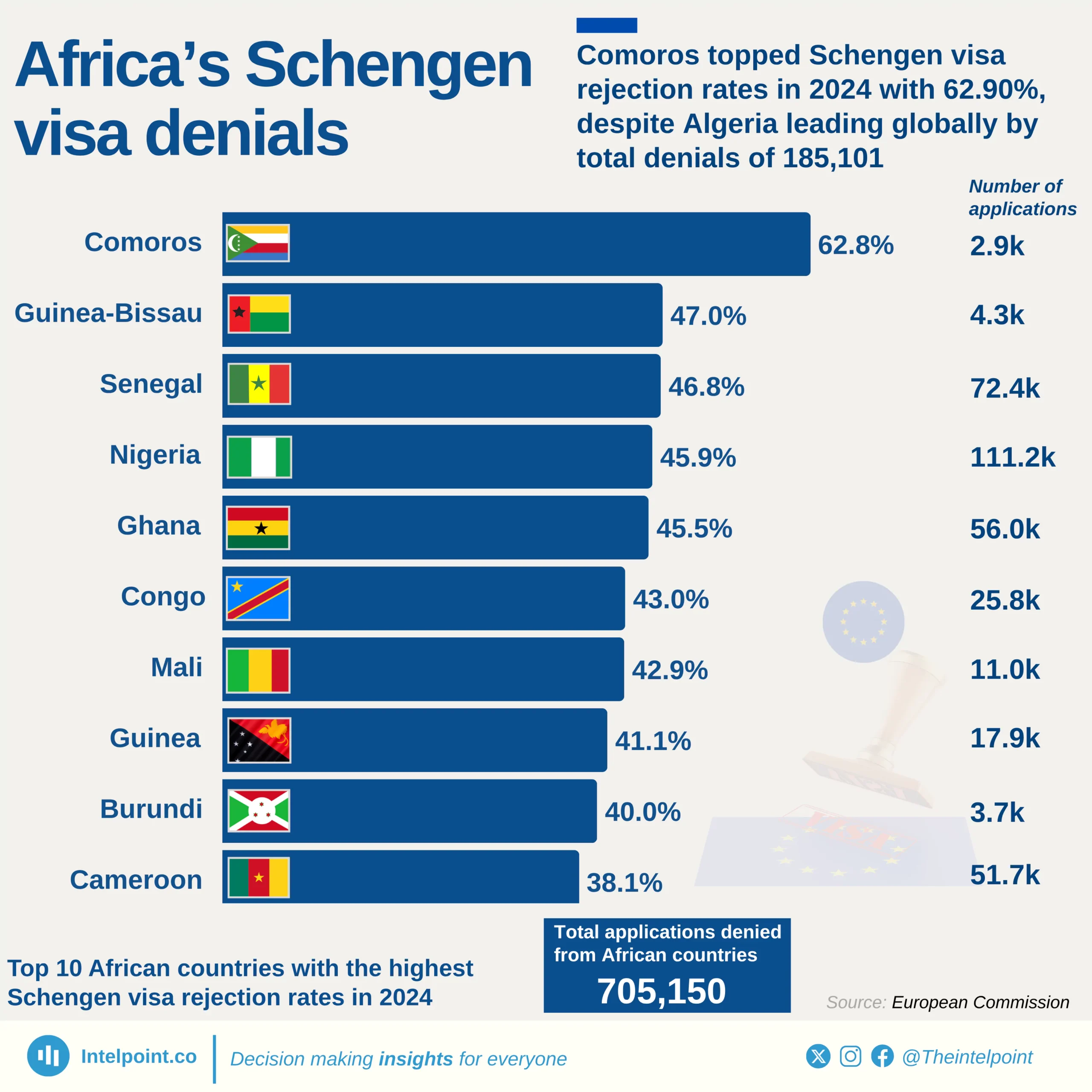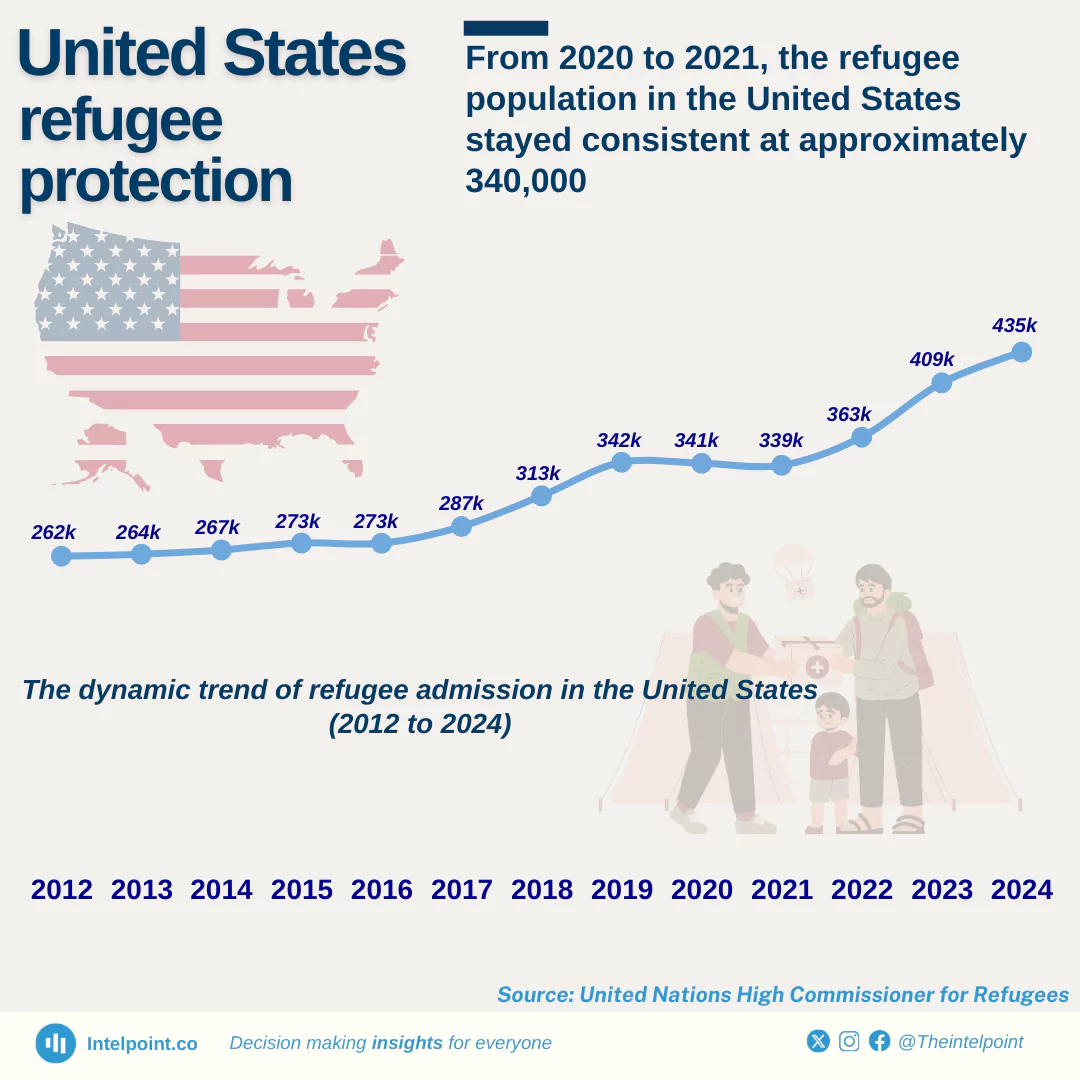Migrant stocks in Africa have undergone significant changes over the decades. Nigeria, for instance, saw its migrant stock skyrocket from 94,133 in 1960 to 1,199,115 in 2015, indicating increased mobility. Similarly, South Africa experienced a substantial surge, with migrant numbers growing from 927,656 in 1960 to over 3.1 million in 2015. In contrast, countries like Libya witnessed fluctuating trends, peaking at 771,146 in 2015 after a steady rise. Conversely, Somalia saw a dramatic decline from over 1.6 million migrants in 1980 to just 25,291 in 2015.
At the other end of the spectrum, the five countries with the lowest migrant stocks in 2015 were São Tomé and Príncipe (2,394), Lesotho (6,572), Comoros (12,555), Seychelles (12,791), and Guinea-Bissau (22,333). Historically, these countries have maintained low migrant populations, with minimal fluctuations over the decades.

Comoros leads with a striking 62.8% rejection rate, the highest not just among African consulates, but also the global consulate countries
Guinea-Bissau, Senegal, and Nigeria follow with rejection shares between 45% and 47%.
Despite having one of the highest total visa rejections globally, Algeria does not appear in this chart, as its rejection share is comparatively lower.
Countries with smaller applicant pools tend to have higher rejection rates, shedding light on access disparities and approval scrutiny in consulate processes.




